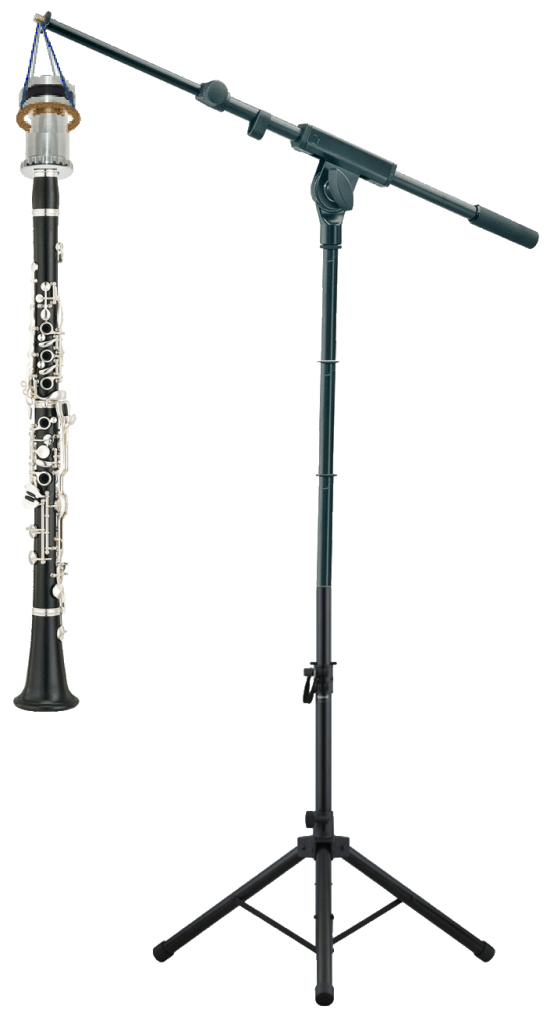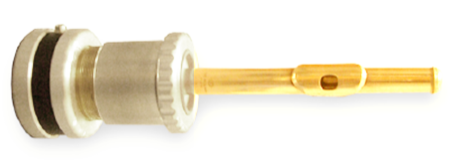Clarinets: Since the individual keys or tone holes must be operated in order to measure the notes, here are two examples of a simple measuring setup:
With a ring or a suitable hole in a small wooden plate, you can hang the clarinet on a microphone stand so that the keys and tone holes are comfortable and easy to handle.
In this case, it is not necessary to measure the mouthpiece and the rest of the instrument separately, because instead of the mouthpiece an adapter is used, which has the same volume as the clarinet mouthpiece.
With transverse flutes, on the other hand, the separate measurement of the headjoint and the rest of the instrument is recommended.
Having only the headjoint with the connected measuring head in your hands instead of the flute is a bit unusual, but you can use the necessary different covering of the mouth hole very well for the different notes in a practical way. “Grasping” the notes on the instrument body may also be unusual with the connected measuring head, but it works very well.
Unlike brass instruments, there is a separate folder for each note. Which keys or tone holes you use on the instrument for this is up to you. You do not have to measure all notes, but can choose which fingerings you want to measure by default.
You can also measure woodwind instruments disassembled into their individual parts. This has the advantage that individual parts can be connected to the measuring head more easily. This method is especially recommended for flutes and clarinets or some saxophones. Usually the headjoint/mouthpiece and the rest of the instrument are measured separately. With a mouse click on the “Combine” symbol BIAS combines the two measurements to one instrument.
If an adapter is used for coupling to the measuring head, BIAS calculates any additional volume so that the measurement curves are not falsified.



